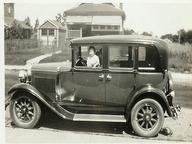Quiz Answer Key and Fun Facts
1. Who was the King of Italy? His lengthy reign began when Queen Victoria was still on the English throne.
2. What was the capital of the southern African British protectorate of Bechuanaland? It certainly hit the headlines in May 1900!
3. Located in the Indian province of Kashmir and Jammu, about 150 miles north-east of Srinagar in the Kara Korum range, what was the name of the world's second highest mountain?
4. Which legendary cricketer held the world record for the number of wickets taken in a single Test match - 17, a feat he achieved at the age of 40?
5. If you were visiting the Netherlands and you wanted Dutch currency, what would you get for one pound sterling according to the Exchange Rate set on 8th April, 1935?
6. Surely all countries in this day and age were using the same size of railway track, or no such luck? Which of the following pairs of maverick nations do not run their trains on standard (4 feet 8.5 inch) gauge railtrack like all the others?
7. Britannia, needless to say, ruled the waves. Or did she? At the beginning of 1935, what was the largest passenger liner afloat?
8. In 1935 which of the following towns did NOT give its name to a Scottish county?
9. Which sprinter, the then reigning Olympic champion at 100 metres, was nicknamed the 'Midnight Express' and had been appearing on the vaudeville circuit with Bill 'Bojangles' Robinson since his famous victory in the 1932 LA Olympics?
10. According to the 1935 edition of 'Everybody's Pocket Companion', what was the only animal that cannot swim?
Source: Author
Richie15
This quiz was reviewed by FunTrivia editor
bloomsby before going online.
Any errors found in FunTrivia content are routinely corrected through our feedback system.

